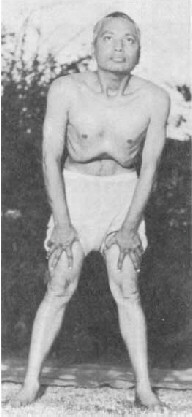- Patanjali Yoga
- Vashishta Yoga
- Kundalini yoga
- Tantra Yoga
- Laya Yoga
- Nada Yoga
- Swara Yoga
- Kriya Yoga
- Mantra Yoga
Patanjali is regarded as a divine incarnation of the serpent Anantha, who is revered as the ‘supporter of the whole universe’. He is the Adhisesha of Lord Mahavishnu.
It is believed that on instructions from a great teacher, Patanjali identified all the teachings in the Vedas about the mind and presented them in a precise and organized form called‘yoga’.
Patanjali’s yoga system aims to unite the individual self with the Supreme One. According to Patanjali, one can attain this union by controlling and eliminating the ever- arising‘vrittis’or modifications of the mind. He also suggests that the mind, in turn, can be controlled through the right kind of discipline and training.
Patanjali says that there are basic obstacles pervading the mind that are not conducive to yoga practice. He divides these obstacles into two groups:
1. Antarayas (intruders in the path of yoga)
2. Viksepasahabhuvah (co-existing with mental distraction)
There are nine Antarayas. They are:
1. Vyadhi (physical disease)
2. Styana (mental laziness)
3. Samsaya (doubt)
4. Pramada (heedlessness)
5. Alasya (physical laziness)
6. Avirati (detachment)
7. Bhrantidarsana (false perception)
8. Alabdha- bhumikatva (non-attainment of yogic states)
9. Anavasthitatva (falling away from yogic states attained)
Vyadhimeans physical disease and is the first obstacle to the practice of yoga. If the body is inflicted with disease, it has to be cured and restored to a healthy state. Disease causes disturbance in the mind and makes it impossible to practice yoga or, for that matter, any other form of physical discipline.
Styanarefers to mental laziness. This trait in the human psyche makes one desirous of the fruits of action without the required effort. Discrimination and will power should be cultivated to do away with mental laziness. Discrimination helps us to understand the benefits of yogic disciplines.
Samsayameans doubt. When one tries to control the mind, doubts arise. The mind does not know the benefits of concentration. Therefore, faith in oneself, the spiritual teacher and holy books is essential. Faith is necessary to dispel doubt.
Pramadameans heedlessness. If one is heedless to cultivate virtues and follow truth, then the practice of yoga is not possible. Lack of vigil will lead to a steep fall in spiritual life.
Alasyaor physical laziness (sloth) will attract ills like poverty. One should involve oneself in healthy activities to overcome such laziness.
Aviratirefers to detachment. To practice yoga, the mind should be purified of material desires and a sense of detachment should be cultivated.
Bhrantidarsanaor false perception leads to self-conceit. This trait is not good for anyone who is keen to practice yogic disciplines.
Alabdha bhumikatvameans non-attainment of yogic states due to evil tendencies in our personality. These should be recognized and eliminated by dispassionate and deep introspection. Otherwise, progress is hindered.
Anavasthitatvameans falling away from yogic states after reaching them. A person who has reached a lofty mental state can slide to a slow ruin, with just one base action. So, actions leading to a downfall have to be obliterated.
